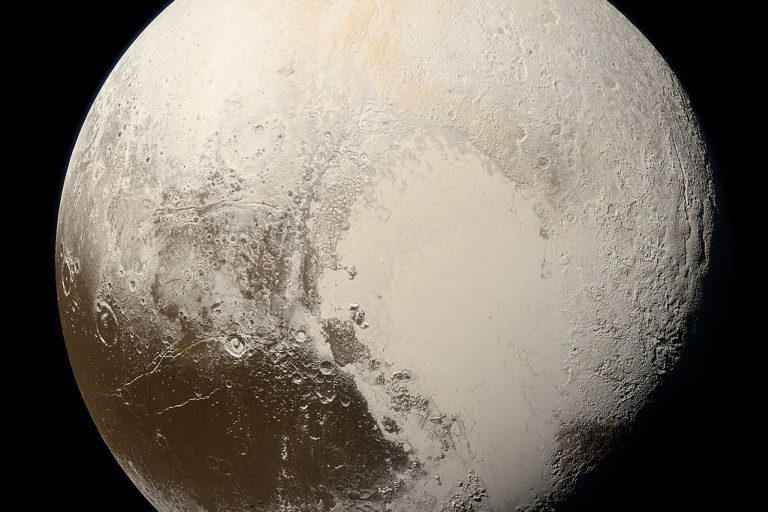
Nu har alt dette ændret sig - Plutos atmosfære ser ud til at have kollapset. Den seneste formørkelse [af en stjerne] i juli sidste år blev observeret af Ko Arimatsu ved Kyoto-universitetet i Japan og kolleger. De siger, at atmosfæretrykket ser ud til at være faldet med over 20 procent siden 2016.
Først noget baggrund. Astronomer har længe vidst, at Plutos atmosfære ekspanderer, når den nærmer sig solen og trækker sig sammen, efterhånden som den fjerner sig. Når solen varmer dens isede overflade, sublimerer den og frigiver nitrogen, metan og kuldioxid i atmosfæren. Når den bevæger sig væk, antages atmosfæren at fryse og falde ud af himlen i det, der må være en af de mest spektakulære isstorme i solsystemet.
Pluto nåede sit nærmeste punkt mod solen i 1989 og er siden bevæget væk. Men dens atmosfære er fortsat med at stige til et niveau, der er ca. 1 / 100.000 af Jordens.
New Horizons
Astronomers think they know why, thanks to the images sent back by the New Horizons spacecraft that flew past Pluto in 2015. These images revealed an unexpectedly complex surface with widely varying colors. A mysterious reddish cap at the north pole turned out to be colored by organic molecules. And a large, white, ice-covered basin called Sputnik Planitia stretched across a large part of one hemisphere.
Planetary geologists think Sputnik Planitia plays an important role in regulating Pluto's atmosphere. That's because, when it faces the sun, it releases gas into the atmosphere. Simulations suggest that this is why Pluto's atmosphere has continued to grow, even as it has begun to move away from the sun.
The simulations are complicated by Sputnik Planitia's color, which determines the amount of light it absorbs, and this in turn is influenced by ice formation in ways that are hard to predict.
Nevertheless, these same simulations suggest that, since 2015, Sputnik Planitia should have begun to cool, causing the atmosphere to condense into ice. Arimatsu and colleagues say that's probably what's behind their new observation.
There is a problem, however. The models suggest that Pluto's atmosphere ought to have shrunk by less than 1 percent since 2016, not the 20 percent observed by the Japanese team. So there may be some other factor at work that is accelerating Pluto's atmospheric collapse.
The result must also be treated with caution. The effect of Pluto's atmosphere on distant starlight is small and hard to observe with the 60-centimeter reflecting telescope that the team used. They say the various sources of error in their measurement make it only marginally significant.
Larger Telescopes
Better observations from larger telescopes are desperately needed. But this is unlikely to happen anytime soon. As well as moving away from the sun, Pluto is moving out of the galactic plane, making stellar occultations much rarer and with less bright stars.
That means the chances to make better observations in the future will be few and far between. The team concludes with a plea for astronomers to observe Pluto with bigger, more sensitive telescopes, preferably those with diameters measured in meters.
Until then, Pluto's vanishing atmosphere will remain something of a mystery.



Læserkommentarer
dig vores Nyhedsbrev